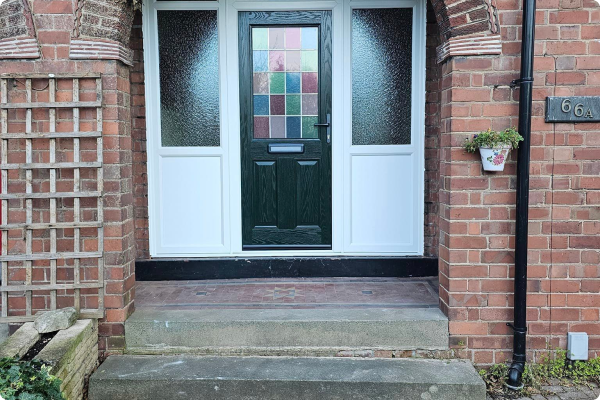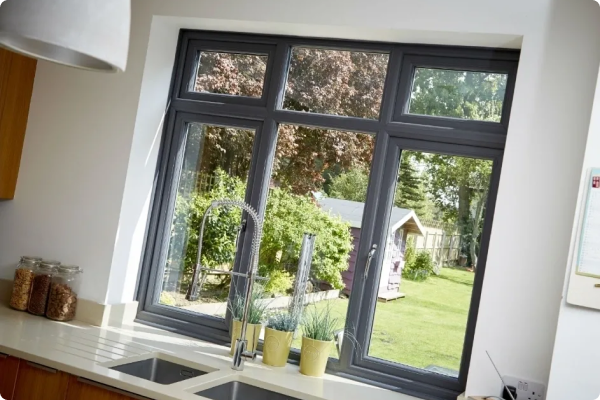When it comes to choosing doors for your home or commercial space, UPVC (Unplasticized Polyvinyl Chloride) doors are often a top contender. Known for their durability, energy efficiency, and low-maintenance qualities, UPVC doors have gained popularity worldwide. But as environmental conditions grow more extreme—with hotter summers, colder winters, and stronger storms— manufacturers have continued to innovate, especially in areas such as weather resistance and UV protection. If you’re considering upgrading your doors or building anew, read on to discover how these cutting-edge advances can benefit your property.
Understanding UPVC Doors and Their Appeal
Before diving into the newest innovations, it helps to understand why UPVC doors are so widely used in the first place. Traditionally, people often chose wooden or aluminum doors. While these materials have their merits, they also come with specific drawbacks—wood can warp or rot if not maintained properly, and aluminum may not offer as much insulation for energy efficiency. UPVC, on the other hand, offers:
- Low Maintenance: UPVC doors are resistant to rot, corrosion, and pests, meaning you won’t need frequent treatments or protective coatings.
- Energy Efficiency: Many UPVC doors feature multi-chamber designs that offer excellent insulation, keeping heat indoors during winter and outdoors during summer.
- Affordability: Compared to premium wood or high-grade aluminum, UPVC is often a more cost-effective choice without sacrificing performance.
- Longevity: Properly manufactured and installed UPVC doors can last for decades, maintaining structural integrity and good looks.
Despite these advantages, changing weather patterns and intensified UV exposure have prompted ongoing research and development in UPVC door technology. From updated production methods to new surface treatments, there’s plenty happening behind the scenes.
The Challenge of Weather Resistance
1. Battling Extreme Temperatures
One key challenge for any exterior door is handling extreme temperature fluctuations. Large swings in temperature can cause expansion and contraction, which might lead to cracks, gaps, or even warping over time. Innovations in UPVC doors now focus on materials that are more flexible in high heat and more resistant to becoming brittle in cold conditions. For instance, certain formulations of the vinyl compound are specifically tailored to maintain structural integrity at both ends of the temperature spectrum.
2. Withstanding High Wind and Storms
As storms intensify in many regions, door frames and panels must handle stronger winds and flying debris. Manufacturers have responded by reinforcing UPVC profiles with galvanized steel or specially engineered composite materials. These reinforcements are often invisible within the frame but can dramatically increase the overall strength and weather resistance of the door. Additionally, advanced sealing systems—featuring multiple compression seals—help keep out rain, wind, and dirt, further enhancing the door’s resilience.
3. Addressing Water Infiltration
Heavy rains and flooding pose a threat to many structures. Water infiltration can damage interior finishes, insulation, and even the structural components of a building over time. Innovations in drainage systems within the door’s threshold help to channel water away effectively. Modern UPVC doors may include built-in drainage slots and channels in the frame, preventing water from pooling at the door base.
The Role of UV Protection
1. Color Retention and Fading Resistance
Sunlight contains ultraviolet (UV) rays that can fade colors and degrade materials over time. Early versions of UPVC doors could lose their bright whiteness or other pigments if exposed to harsh sunlight for years. In response, manufacturers now incorporate UV stabilizers into the vinyl compound. These stabilizers absorb or reflect a portion of the sun’s UV radiation, reducing color changes and preserving the door’s appearance for longer.
2. Preventing Material Degradation
Beyond color fading, UV exposure can also cause micro-cracks and surface deterioration. To combat this, some UPVC doors feature co-extrusion technology, which applies a thin outer layer of UV-resistant material over the core vinyl. This outer layer shields the underlying UPVC from direct sunlight, dramatically slowing down the process of degradation. Over time, such an approach can add years to the door’s lifespan, while keeping it looking new and attractive.
3. Reflective Coatings
In addition to UV stabilizers and co-extrusion methods, new reflective coatings have emerged as a way to deflect not just UV rays but also infrared (IR) radiation. By reflecting the portion of sunlight responsible for heat buildup, these coatings help keep the door’s surface cooler. This is particularly helpful in regions with scorching summers, where intense heat can accelerate wear on door materials and finishes.
Specific Innovations Changing the Game
- High-Impact Modified Polymers
Some manufacturers are experimenting with polymers that can better resist impact and weather-based stresses. These polymers maintain UPVC’s innate properties while granting it extra flexibility, resilience, and UV stability. - Foam-Core Insulation
An insulated foam core sandwiched between layers of UPVC can significantly enhance thermal efficiency while also providing structural stability. Such doors are especially useful in areas prone to extreme temperature swings or those looking to cut down on energy costs. - Multi-Chamber Profiles
Traditional UPVC door profiles may have one or two internal chambers. Today’s cutting-edge designs can feature three, four, or even more chambers. These extra chambers increase insulation, improve soundproofing, and create more barriers against moisture infiltration. By separating different chambers with internal webs, these profiles can better trap air—acting as an insulating buffer zone against external temperatures. - Triple-Seal Systems
Instead of relying on a single or double sealing mechanism, some advanced UPVC doors offer triple-seal systems. This design ensures that even if one seal experiences wear over time, others can step in to keep drafts and moisture at bay. It’s a simple yet effective way to extend the door’s overall performance lifespan. - Thermo-Reinforced Frames
Reinforcement has always been a crucial element of UPVC door design, usually accomplished through steel bars or U-shaped steel inserts. However, thermo-reinforced frames now use lightweight but high-strength materials—like fiberglass or carbon fiber—to achieve a higher strength-to-weight ratio. This reinforcement not only supports weather resistance but also plays a role in UV protection by maintaining consistent frame geometry under varying temperatures.
Balancing Performance with Aesthetics
Another concern for many homeowners and developers is whether these new solutions might compromise style. Fortunately, modern UPVC doors come in a range of finishes, textures, and colors that can fit any architectural style. Thanks to advanced surface treatments and colorfast pigments, you can even find woodgrain textures that mimic the warmth and character of real wood, all while retaining the protective benefits of UPVC.
For those who prefer a sleek, contemporary look, matte finishes and darker hues like anthracite gray or black have become more common. One might wonder if darker colors fade faster, but thanks to the UV-protective measures mentioned earlier, color stability has improved significantly—allowing for bold design choices without the worry of rapid fading.
Compatibility with Energy-Efficient Solutions
Weather resistance and UV protection are closely tied to energy efficiency. When doors have strong seals and insulated profiles, they minimize heat transfer, keeping heating and cooling costs in check. Adding a low-emissivity (Low-E) coating to door glass inserts can also reduce the amount of solar heat entering a building, further augmenting energy savings.
In fact, many modern UPVC doors can meet or exceed ENERGY STAR® standards in various regions, indicating their proven effectiveness in insulating properties. Coupled with robust UV protection, these doors maintain both their physical appearance and functional value for the long haul.
Real-World Testing and Certification
As manufacturers continue to develop new methods, independent testing has become more important. Reputable certification bodies, such as the American Architectural Manufacturers Association (AAMA) and the British Standards Institution (BSI), set strict guidelines for weather performance, structural integrity, and thermal efficiency. UPVC doors that carry recognized certifications have undergone rigorous tests—including wind resistance, water penetration, and impact tests—so buyers can trust these products to perform under a variety of conditions.
These certifications are also critical when it comes to building codes and insurance requirements, particularly in areas susceptible to extreme weather events like hurricanes or tornadoes. By selecting UPVC doors with the appropriate weather resistance and impact ratings, property owners can often qualify for lower insurance premiums and meet local building standards more easily.
Making an Informed Decision
Choosing a door might seem straightforward at first glance, but when you consider all these innovations, it becomes clear that UPVC doors are more than just a basic entryway solution. With enhanced weather resistance and advanced UV protection, the latest models offer a blend of style, durability, and energy efficiency that meets or exceeds modern demands.
When shopping around, ask manufacturers or installers about:
- UV Stabilizers and Coating Technologies: Which ones are used, and how do they protect the door over the long term?
- Reinforcement Methods: Is it galvanized steel, fiberglass, or another high-strength material?
- Sealing Systems: How many seals are there, and what is the track record for keeping out drafts and water?
- Certifications: Does the door meet relevant standards for wind, water, and impact resistance?
- Maintenance Requirements: UPVC doors are typically low-maintenance, but are there any specific care instructions to preserve UV-protective finishes?
By doing your homework and asking the right questions, you can select a UPVC door that will stand the test of time—resisting harsh weather, blocking harmful UV rays, and maintaining its aesthetic appeal for decades.
Where to Turn for Expert Guidance
It’s clear that UPVC doors have evolved significantly thanks to advances in weather resistance, UV protection, and energy efficiency. For property owners, this means a wider selection of high-performance, visually appealing doors that can handle just about any climate challenge. If you’re ready to explore your options and want reliable advice on which UPVC doors best suit your specific needs, we recommend consulting with an experienced provider. Energy Windows has a strong track record of delivering top-tier window and door solutions designed with the latest innovations in mind. With their help, you can ensure that your new UPVC doors will offer the perfect blend of functionality, durability, and style—no matter what Mother Nature throws your way.








